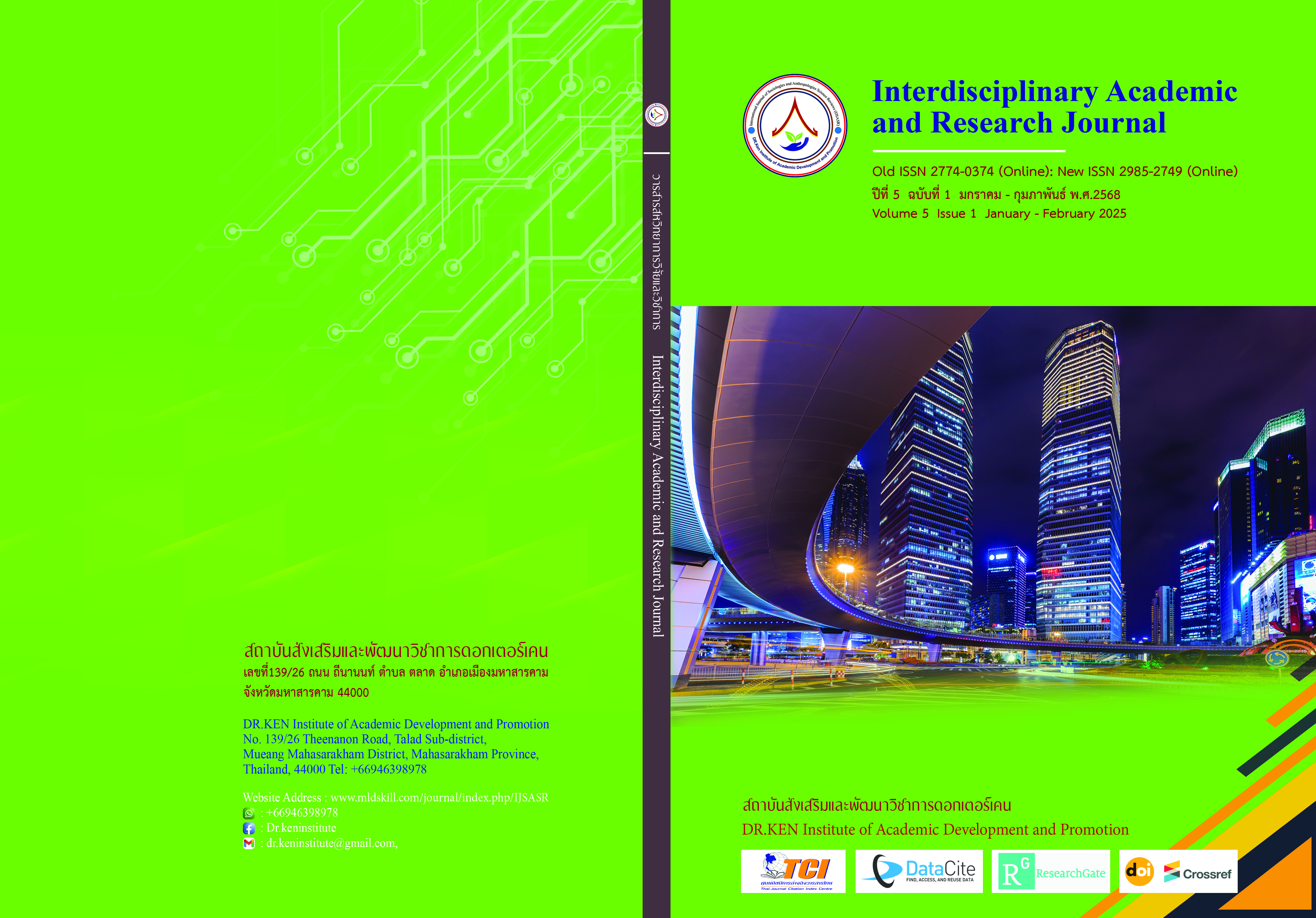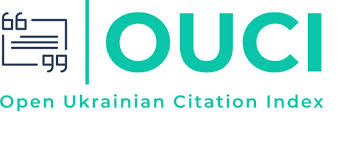Influence of Knowledge and Attitudes About Prohibited Cosmetic Substances on Generation Z's Online Purchases in Lampang
DOI:
https://doi.org/10.60027/iarj.2025.285465Keywords:
Online Consumer Behavior, , Toxic Ingredients in Cosmetics, , Generation ZAbstract
Background and Aims: This study investigates how knowledge of prohibited substances in cosmetics and attitudes toward these substances influence the purchasing decisions of Generation Z consumers on online platforms in Lampang Province. Online platforms have become a dominant marketplace for cosmetics, but concerns about harmful ingredients such as mercury and hydroquinone have raised awareness among consumers. Understanding these factors can provide insights into consumer behavior and support safer purchasing practices. Lampang Province represents an emerging market with increasing online cosmetic purchases among Generation Z."
Methodology: The study employed a cross-sectional analytical research design with 390 Generation Z participants residing in Lampang Province. Data were collected through a structured questionnaire covering demographic information, knowledge of prohibited substances in cosmetics, attitudes toward these substances, and purchasing decision behavior. The data were analyzed using descriptive statistics and multiple regression analysis.
Results: The findings reveal that both knowledge and attitudes toward prohibited substances significantly influence purchasing decisions. Consumers with a higher knowledge of harmful substances tend to avoid products containing these ingredients. Similarly, negative attitudes toward prohibited substances encourage safer purchasing behavior. Regression analysis demonstrated a strong positive relationship between these variables and purchasing decisions, with attitudes having a slightly greater impact than knowledge.
Conclusion: The study concludes that knowledge and attitudes about prohibited substances in cosmetics play crucial roles in shaping purchasing decisions among Generation Z consumers in Lampang Province. These findings highlight the importance of education and transparent product labeling in promoting safer online purchasing behaviors.
References
Bogal, N., Harun, N. A., Tamrin, M., Royali, S. A., & Abidin, N. F. Z. (2024). Attitude on customer purchase intention towards adulterant cosmetic products in Malaysia. European Proceedings of Social and Behavioural Sciences, 5(7), 71-82.
Boman, A., Miguel, M., Andersson, I., & Slunge, D. (2024). The effect of information about hazardous chemicals in consumer products on behavior: A systematic review. Science of the Total Environment, 947, 174774.
Boome, M. (2018). Cosmetics: Consumers’ choice; consumers’ policy (Master's thesis). The Evergreen State College.
Bunruang, S. (2024). Cosmetic purchasing decision behavior of consumers in Mueang District Phayao Province. The Journal of Pacific Institute of Management Science (Humanities and Social Science), 10(3), 103-115.
Cosmetic Act B.E. 2558 (2015). Royal Gazette No.132, Part 86A (Sep 8, 2015).
Gunatirin, E. Y., Wijanarko, G., Amaliyah, A., & Deli, M. M. (2023). Model of Rational and Emotional Decision Making in The First Purchase of Cosmetics. TIJAB (The International Journal of Applied Business), 7(2), 152-161.
Hair, J. F., Hult, G. T. M., Ringle, C. M., Sarstedt, M., Danks, N. P., & Ray, S. (2021). An introduction to structural equation modeling. In Partial Least Squares Structural Equation Modeling (PLS-SEM) Using R: A Workbook (pp. 1–29). Springer.
Handriana, T., Yulianti, P., Kurniawati, M., Arina, N. A., Aisyah, R. A., Ayu Aryani, M. G., & Wandira, R. K. (2021). Purchase behavior of millennial female generation on Halal cosmetic products. Journal of Islamic Marketing, 12(7), 1295-1315.
Hasan, M. K. H., & Kumar, L. K. (2024). Determining adequate sample size for social survey research: sample size for social survey research. Journal of the Bangladesh Agricultural University, 22(2), 146-157.
Isa, R. M., Man, S., Abdul Rahman, N. N., & Aziz, A. (2023). Determinants of consumer adoption of halal cosmetics: A systematic literature review. Journal of Cosmetic Dermatology, 22(3), 752–762.
Ishak, S., Che Omar, A. R., Khalid, K., Ab. Ghafar, I. S., & Hussain, M. Y. (2020). Cosmetics purchase behavior of educated millennial Muslim females. Journal of Islamic Marketing, 11(5), 1055-1071.
Kamkankaew, P., Limpiaongkhanan, P., Wongmahatlek, J., & Sanpatanon, N. (2024). Consumer Existentialism Based on Heidegger's Concept in Digital Marketing. Journal for Developing the Social and Community, 11(3), 625-654.
Kamkankaew, P., Sribenjachot, S., Wongmahatlek, J., Phattarowas, V., & Khumwongpin, S. (2022). Reconsidering the mystery of digital marketing strategy in the technological environment: Opportunities and challenges in digital consumer behavior. International Journal of Sociologies and Anthropologies Science Reviews, 2(4), 43-60.
Kamkankaew, P., Thongyoy, P., & Phonracharnon, Y. (2024a). Assessing the Impact of Digital Celebrities and Content Marketing on TikTok's Impulse Purchases in Lampang, Thailand. International Journal of Sociologies and Anthropologies Science Reviews, 4(3), 259-276.
Kamkankaew, P., Thongyoy, P., & Phonracharnon, Y. (2024b). From Clicks to Satisfaction: A Study on How Customer-Based Brand Equity Shapes Customer Satisfaction in Online Food Delivery Realm for Generation Z in Lampang Province, Thailand. International Journal of Sociologies and Anthropologies Science Reviews, 4(2), 109-124.
Lopngpanich, T., & Sribundit, N. (2023). Evaluation on Implementation of Patient Information Leaflet of Division of Innovative Health Products and Services, Thai Food and Drug Administration (Doctoral dissertation, Silpakorn University).
Malhotra, N. K., Nunan, D., & Birks, D. F. (2020). Marketing research: Applied insight. Pearson UK.
Manjula, K., Vani, A., Parvathi, M. S., & Srujana, U. M. S. (2022). A study on knowledge, attitude, and practice of using cosmetics among university students. International Journal of Health Sciences, 6(S8), 5083–5100.
Manjula, K., Vani, A., Parvathi, M. S., & Srujana, U. M. S. (2022). A study on knowledge, attitude, and practice of using cosmetics among university students. International Journal of Health Sciences, 6(S8), 5083–5100.
Nakharin, T., & Sompopcharoen, M. (2021). Factors related to skin-whitening product consumption behavior among undergraduate students in Bangkok Metropolis. Journal of Health and Nursing Research, 38(1), 109–113.
Park, E.-H., & Lee, I.-H. (2023). The effect of conscious cosmetics selection attributes of Generation Z on perceived value and eco-friendly consumption efficacy. Journal of Korean Society of Cosmetology, 29(4), 1006–1015.
Phucharern, O., Rodkaew, A., & Konkong, C. (2018). Knowledge, attitude, and consumer behavior of glutathione products among university students. PSRU Journal of Science and Technology, 3(3), 50–63.
Rahman, S. A., Rahim, T. N. K. T., & Zaid, W. S. W. (2022). Analyzing consumer awareness, knowledge, and behavior among the population in Putrajaya. International Journal of Health Sciences, 6(S7), 5010–5020.
Ramadhani, A., Fauzi, A., & Absah, Y. (2021). The influence of brand awareness, knowledge, and halal labels on purchase decisions of cosmetics Emina through reference groups as a moderating variable on Generation Y and Generation Z in the city of Medan. International Journal of Research and Review, 8(1), 323-325.
Samangnate, S., & Ruengorn, C. (2019). Prevalence of suspected cosmetic products containing prohibited substances in border districts of the 10th public health region. Journal of Health and Nursing Research, 38(1), 109–111.
Sanguanwong, K., & Khaikham, L. (2024). Quality of Life and Work-Life Balance Among Veterinarians Working in Bangkok and Vicinity: A Comparative Study of Generation X and Generation Y. Interdisciplinary Academic and Research Journal, 4(5), 109–120.
Septianda, T., & Priantina, A. (2024). Gen Z and halal local cosmetics. Airlangga Journal of Innovation Management, 5(2), 201–214.
Siagian, S., Lubis, F. A., & Hasibuan, R. R. A. (2024). Cosmetic Purchasing Decisions with Brand Image as An Intervening Variable. Jurnal Ekonomi, Bisnis & Entrepreneurship, 18(2), 649-664.
Srikhamhaeng, S., Thanitbenjasith, P., & Kamkankaew, P. (2024). The Impact of Marketing Mix on Generation Z's Mobile Phone Case Purchasing Decisions in Chiang Mai, Thailand. International Journal of Sociologies and Anthropologies Science Reviews, 4(6), 501-510.
Suwandi, D. S., & Balqiah, T. E. (2023). Factors increasing the loyalty of local cosmetic brands: A study on Generation Z in Indonesia. Binus Business Review, 14(3), 285–296.
Tavakol, M., & Dennick, R. (2011). Making sense of Cronbach's alpha. International journal of medical education, 2, 53.
Wandirah, A., Atkiyan, F. H., Juansha, A., & Azhar, J. A. (2024). The decision to use halal cosmetics: Influence of quality, benefits, awareness, and brand image. Journal of Islamic Economic Laws, 7(1), 107–123.
Wittayapanyanond, W., Pityaratstian, N., & Buathong, N. (2021). The psychometric property testing of the Children’s Yale-Brown Obsessive-Compulsive Scale (CY-BOCS): Thai version. Chulalongkorn Medical Journal, 65(2), 173-178.
Downloads
Published
How to Cite
Issue
Section
License
Copyright (c) 2025 Interdisciplinary Academic and Research Journal

This work is licensed under a Creative Commons Attribution-NonCommercial-NoDerivatives 4.0 International License.
Copyright on any article in the Interdisciplinary Academic and Research Journal is retained by the author(s) under the under the Creative Commons Attribution-NonCommercial-NoDerivatives 4.0 International License. Permission to use text, content, images, etc. of publication. Any user to read, download, copy, distribute, print, search, or link to the full texts of articles, crawl them for indexing, pass them as data to software, or use them for any other lawful purpose. But do not use it for commercial use or with the intent to benefit any business.
















.png)


